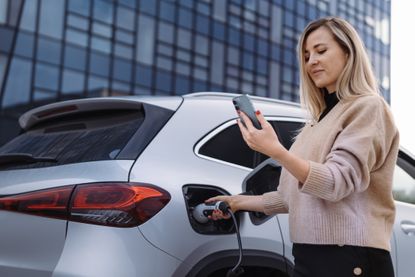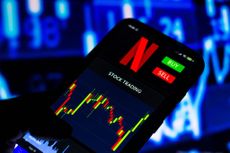Where to invest in the metals that will engineer the energy transition
A professional investor tells us where he’d put his money. This week: John Ciampaglia, manager of the Sprott Energy Transition Materials UCITS ETF.


Sprott has specialised in the metals and mining sector for decades. The Sprott Energy Transition Materials UCITS ETF focuses on eight critical minerals that are essential to the generation, transmission, and storage of clean energy. We apply a rigorous investment-screening process to select the pure-plays well positioned to benefit from the increased investment in the critical minerals necessary for the clean-energy transition. These three companies are at the epicentre of the clean-energy movement.
Driving the EV revolution
Lithium is synonymous with electric-vehicle (EV) batteries, and Sociedad Quimica y Minera de Chile SA (NYSE: SQM) is the second-largest producer of this critical mineral. Being based in Chile, SQM has exclusive access to the world’s largest and highest-known concentration of lithium-rich brines. The group expects to produce about 180,000 metric tons of lithium carbonate in 2023, with plans to increase refining capacity of lithium carbonate and lithium hydroxide in the coming years.
With a market capitalisation of more than $19bn, SQM has considerable resources and expects to expand its refining capacity. Record-high lithium prices in the autumn of 2022 caused users to draw down existing supplies of lithium rather than purchase additional material at inflated prices, lowering sales in the short term. Demand for restocking and rising prices in the early part of 2023 is expected to contribute to a strong second half of the year.
Subscribe to MoneyWeek
Subscribe to MoneyWeek today and get your first six magazine issues absolutely FREE

Sign up to Money Morning
Don't miss the latest investment and personal finances news, market analysis, plus money-saving tips with our free twice-daily newsletter
Don't miss the latest investment and personal finances news, market analysis, plus money-saving tips with our free twice-daily newsletter
Copper leads the charge
Given its ability to conduct electricity efficiently, copper plays a central role in energy transmission and EVs. Producing more than 4.2 billion pounds of copper in 2022, Freeport-McMoRan (NYSE: FCX) is the largest publicly traded miner of this critical mineral in the world, boasting copper reserves in Indonesia and North and South America. Thanks largely to the energy transition, demand for copper may double between 2022 and 2035. FCX is already well positioned to meet the world’s growing need for copper, having copper reserves of 111 billion pounds, but it also intends to increase production.
Freeport’s copper resources – which include reserves, discovered deposits and undiscovered deposits based on geological surveys – amount to an estimated 235 billion pounds. Accessing these vast reserves in a sustainable way is a priority for Freeport. It implements the sustainable development framework created by the International Council on Mining and Metals (of which FCX is a founding member).
The boom in battery technology
EV makers are continually searching for new battery technologies that can lower costs and increase cars’ range. Increasing the proportion of nickel in lithium-ion batteries to as much as 80% has helped meet both goals. The A$11bn (£6bn) Australia-based explorer and miner IGO Limited (Sydney: IGO) is a leading supplier of nickel.
In addition to its three nickel-copper-cobalt operations in Western Australia, IGO has nearly a dozen more exploration projects and two lithium-producing assets in the battery metals-rich country. Over the last several years, IGO has invested heavily to ensure the company’s future growth and enable it to capitalise on the growing demand for critical battery minerals.
Nic studied for a BA in journalism at Cardiff University, and has an MA in magazine journalism from City University. She joined MoneyWeek in 2019.
-
-
 Most popular stocks of 2023: AI on the up while interest in Netflix plummets
Most popular stocks of 2023: AI on the up while interest in Netflix plummetsWe reveal the most popular shares of 2023 so far.
By Ruth Emery Published
-
 Marine North Berwick review: Scotland’s magical bird isles
Marine North Berwick review: Scotland’s magical bird islesMatthew Partridge combines a stay at Marine North Berwick with a visit to see the puffins
By Dr Matthew Partridge Published
-
 Investing in wine: how Cru Wine is reaching new audiences
Investing in wine: how Cru Wine is reaching new audiencesTips Gregory Swartberg, founder of fine wine specialist Cru Wine, talks to Chris Carter about how to start a wine collection
By Chris Carter Published
-
 Small companies with big potential
Small companies with big potentialMichael Taylor of Shifting Shares reviews his 2023 picks and highlights more promising minnows.
By Michael Taylor Published
-
 The MoneyWeek portfolio of investment trusts – July 2023 update
The MoneyWeek portfolio of investment trusts – July 2023 updateTips A decade ago we set up the MoneyWeek portfolio of investment trusts. They remain a compelling long-term bet says Rupert Hargreaves
By Rupert Hargreaves Published
-
 Women lead the way with ethical investments
Women lead the way with ethical investmentsDemand for more ethical investments has soared – and women are more likely to opt for them. Annabelle Williams, personal finance specialist at Nutmeg, takes a look at why.
By Annabelle Williams Published
-
 BoE: Mortgage payments to rise by £220 a month for households
BoE: Mortgage payments to rise by £220 a month for householdsMillions of households can expect a mortgage spike of around £200 a month - and some may even reach a extra £1,000 a month, the Bank of England warns
By Marc Shoffman Published
-
 What happened to Thames Water?
What happened to Thames Water?Thames Water, the UK’s biggest water company could go under due to mismanagement and debt. We look into how the company got itself into this position, and what investors should expect.
By Simon Wilson Last updated
-
 How investors can profit from high food prices
How investors can profit from high food pricesThe latest furore over grocery prices will die down, says David Stevenson. But the long-term outlook for soft commodities remains bullish. These are the stocks investors can buy to profit from high food prices.
By David J Stevenson Published
-
 The outlook for stocks is improving
The outlook for stocks is improvingThis is the best of times for investors, says Max King. Global risks are receding, but few have noticed.
By Max King Published









